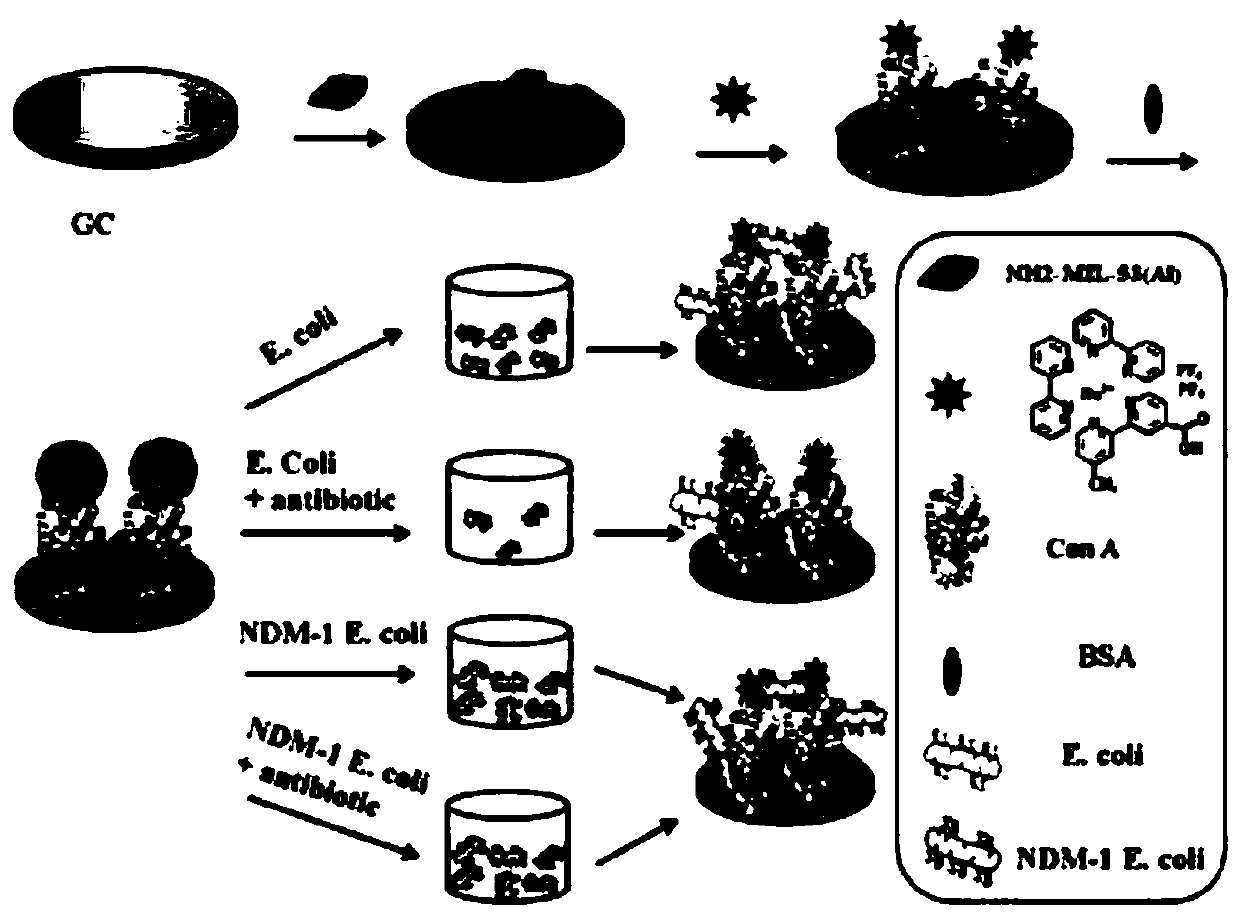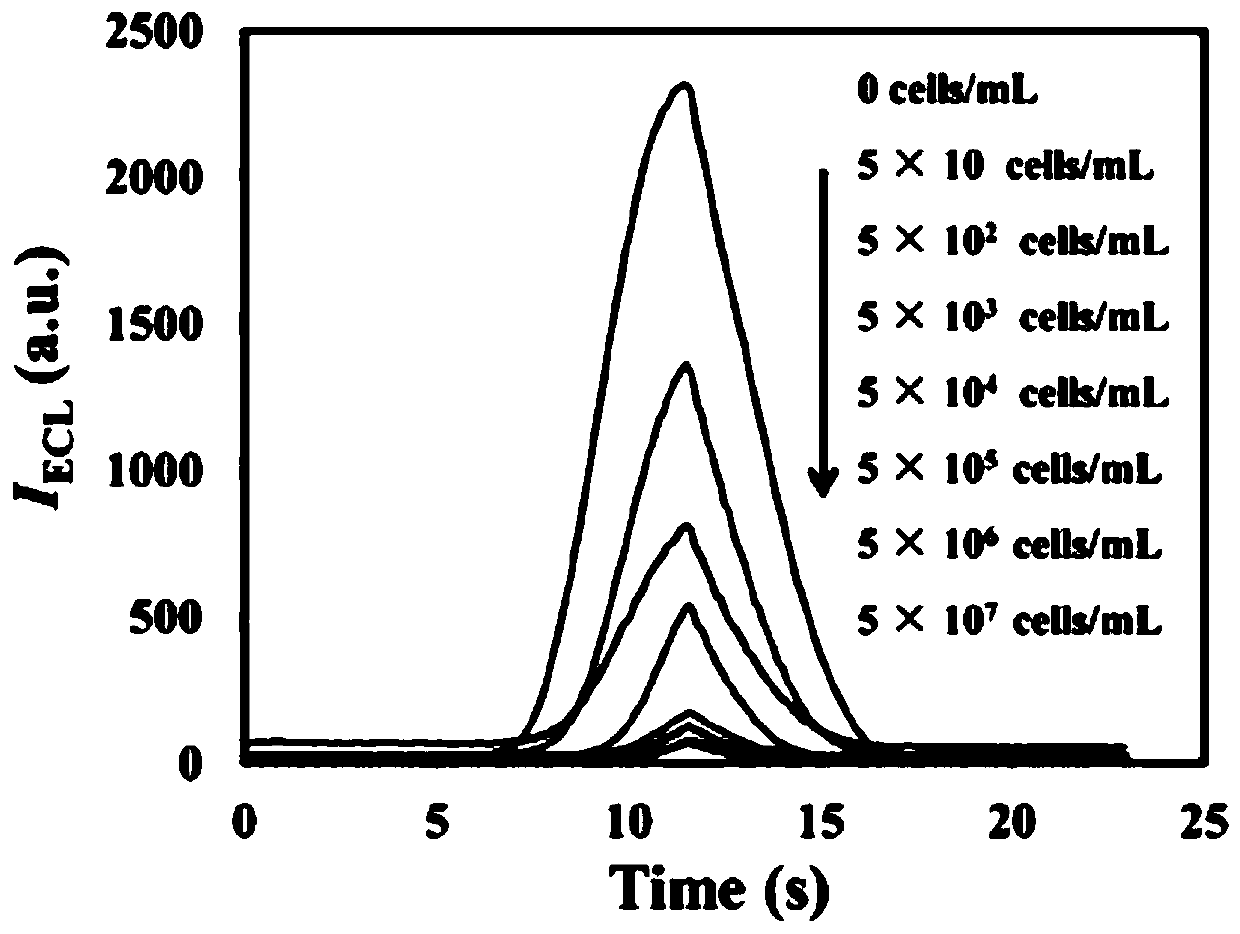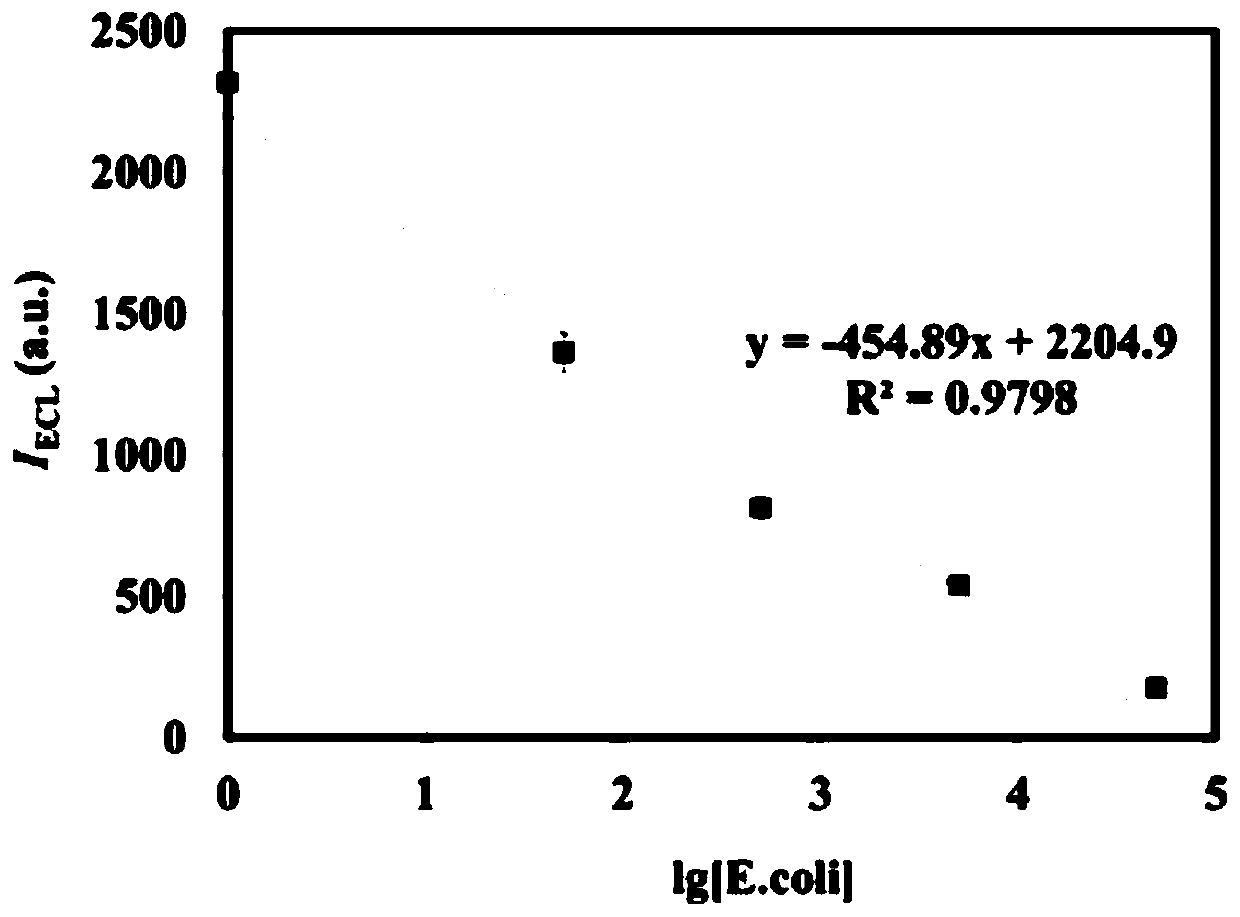Electrochemical luminescence biosensor for detecting drug resistance of bacteria and preparation method of biosensor
A bioluminescent, drug-resistant technology, applied in the field of electrochemiluminescence, can solve the problems of antibiotic abuse, high noise, increased bacterial resistance, etc., and achieve the effects of high sensitivity, high sensitivity, and less reagents
- Summary
- Abstract
- Description
- Claims
- Application Information
AI Technical Summary
Problems solved by technology
Method used
Image
Examples
preparation example Construction
[0040] A preparation method of electrochemiluminescence biosensor for detecting bacterial drug resistance, taking the detection of whether bacteria express MβLs as an example, the selected bacteria is E.coli BL21 / NDM-1E.coli. The specific preparation steps are as follows:
[0041] Step 1. Preparation of NH 2 -MIL-53(Al) nanosheets;
[0042] AlCl 3 ·6H 2 O (3mmol, 0.7243g) was dissolved in 15mL of deionized water, and 2-amino-1,4-phthalic acid (3mmol, 0.5435g) was slowly added under stirring conditions, and stirring was continued for another 30 minutes. Subsequently, 15mL of urea (6mmol, 0.3604g) aqueous solution was added dropwise to the above mixed solution and stirring continued for 30 minutes. After that, the above-mentioned mixture was transferred to a 50mL polytetrafluoroethylene autoclave, and the reaction was allowed to stand at 150℃ for 5h. After the completion of the reaction, the mixture was slowly cooled to room temperature, suction filtered to obtain a milky white and ...
Embodiment 1
[0068] A preparation method of electrochemiluminescence biosensor for detecting bacterial resistance, taking the detection of whether bacteria express MβLs gene as an example, the selected bacteria is E.coli BL21 / NDM-1E.coli, and the specific preparation steps are as follows:
[0069] Step 1. Preparation of NH 2 -MIL-53(Al) nanosheets;
[0070] AlCl 3 ·6H 2 O (3mmol, 0.7243g) was dissolved in 15mL deionized water, and slowly added 2-amino-1,4-phthalic acid (NH 2 -H 2 BDC, 3mmol, 0.5435g), and then continue to stir for 30 minutes. Subsequently, 15mL of urea (6mmol, 0.3604g) aqueous solution was added dropwise to the above mixed solution and stirring continued for 30 minutes. After that, the above-mentioned mixture was transferred to a 50mL polytetrafluoroethylene autoclave, and the reaction was allowed to stand at 150℃ for 5h. After the completion of the reaction, the mixture was slowly cooled to room temperature, suction filtered to obtain a milky white and slightly yellow precipi...
Embodiment 2
[0078] A preparation method of electrochemiluminescence biosensor for detecting bacterial drug resistance, taking the detection of whether bacteria express MβLs gene as an example, the selected bacteria is not E.coli BL21 / NDM-1E.coli, the specific preparation steps are as follows:
[0079] Step 1. Preparation of NH 2 -MIL-53(Al) nanosheets;
[0080] AlCl 3 ·6H 2 O (3mmol, 0.7243g) was dissolved in 15mL deionized water, and slowly added 2-amino-1,4-phthalic acid (NH 2 -H 2 BDC, 3mmol, 0.5435g), and then continue to stir for 30 minutes. Subsequently, 15mL of urea (6mmol, 0.3604g) aqueous solution was added dropwise to the above mixed solution and stirring continued for 30 minutes. After that, the above-mentioned mixture was transferred to a 50mL polytetrafluoroethylene autoclave, and the reaction was allowed to stand at 150℃ for 5h. After the completion of the reaction, the mixture was slowly cooled to room temperature, suction filtered to obtain a milky white and slightly yellow pr...
PUM
 Login to View More
Login to View More Abstract
Description
Claims
Application Information
 Login to View More
Login to View More - R&D
- Intellectual Property
- Life Sciences
- Materials
- Tech Scout
- Unparalleled Data Quality
- Higher Quality Content
- 60% Fewer Hallucinations
Browse by: Latest US Patents, China's latest patents, Technical Efficacy Thesaurus, Application Domain, Technology Topic, Popular Technical Reports.
© 2025 PatSnap. All rights reserved.Legal|Privacy policy|Modern Slavery Act Transparency Statement|Sitemap|About US| Contact US: help@patsnap.com



